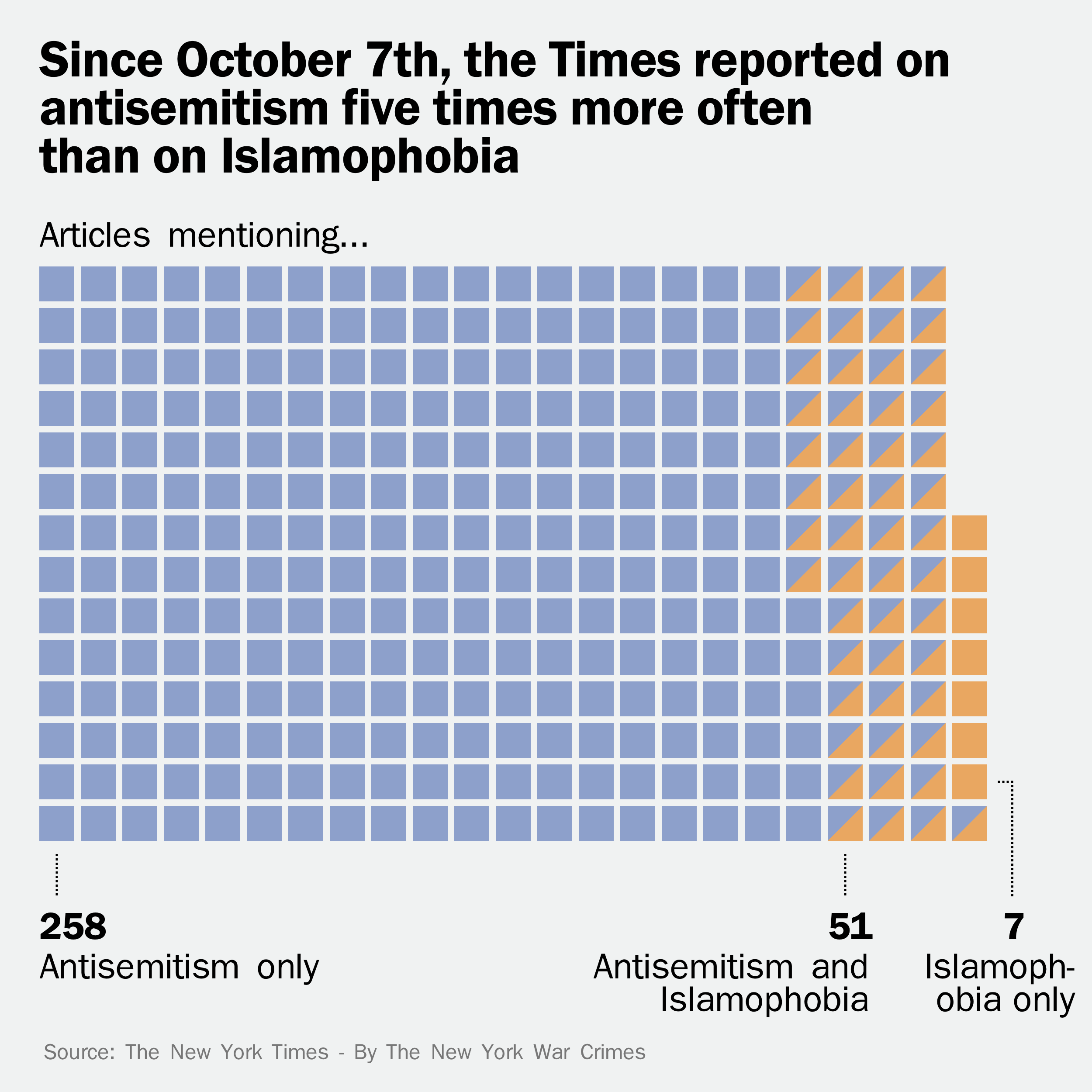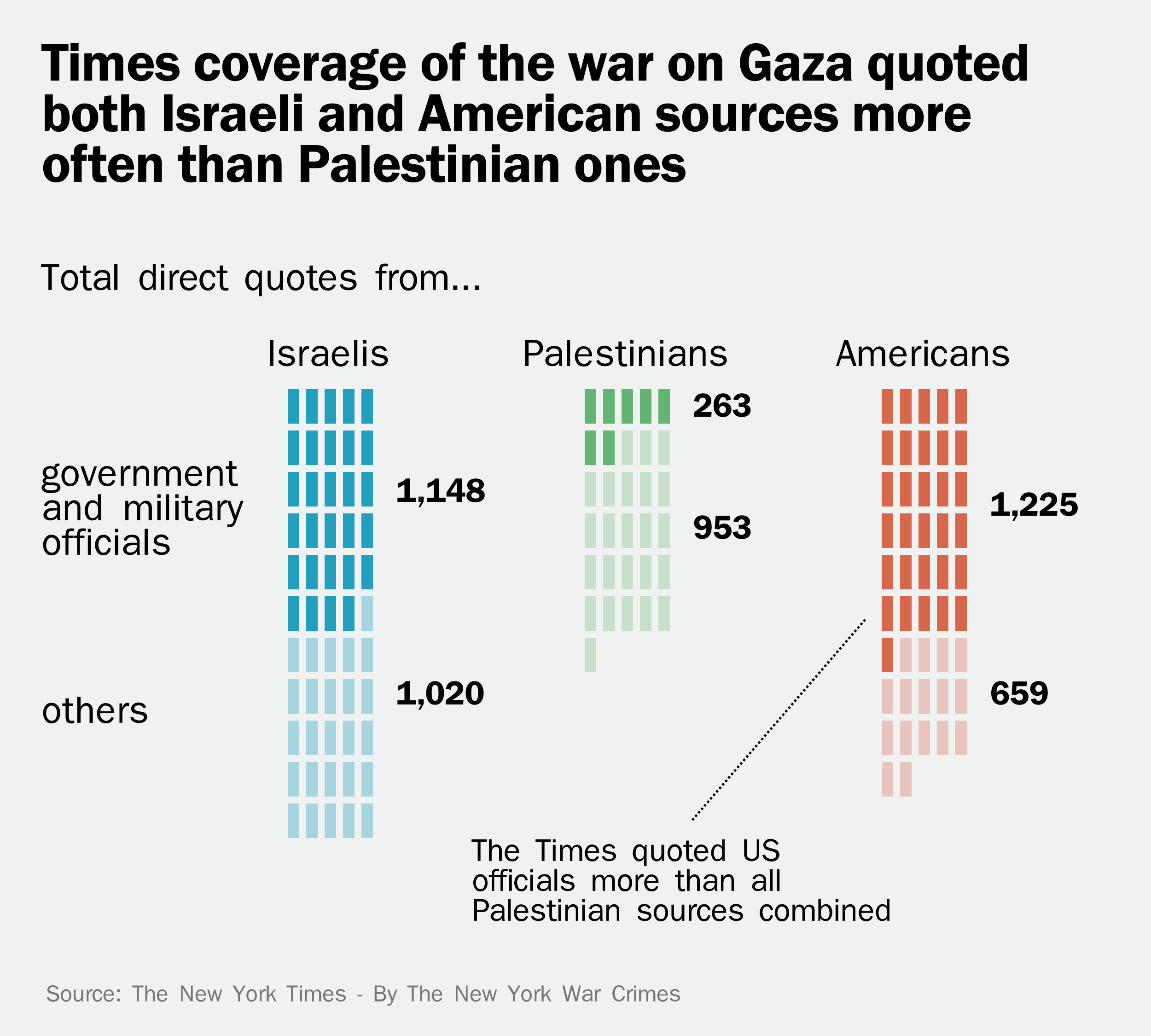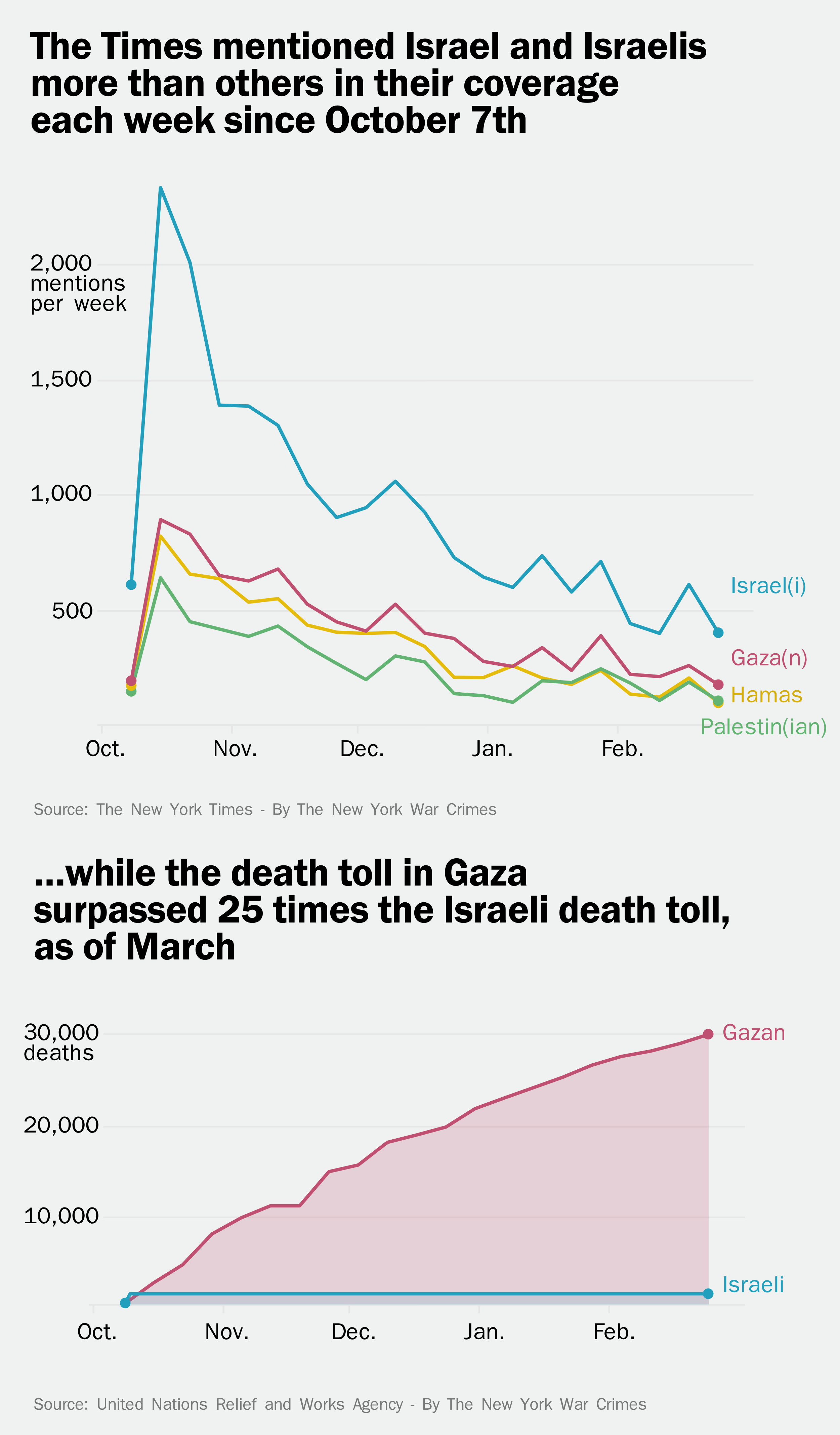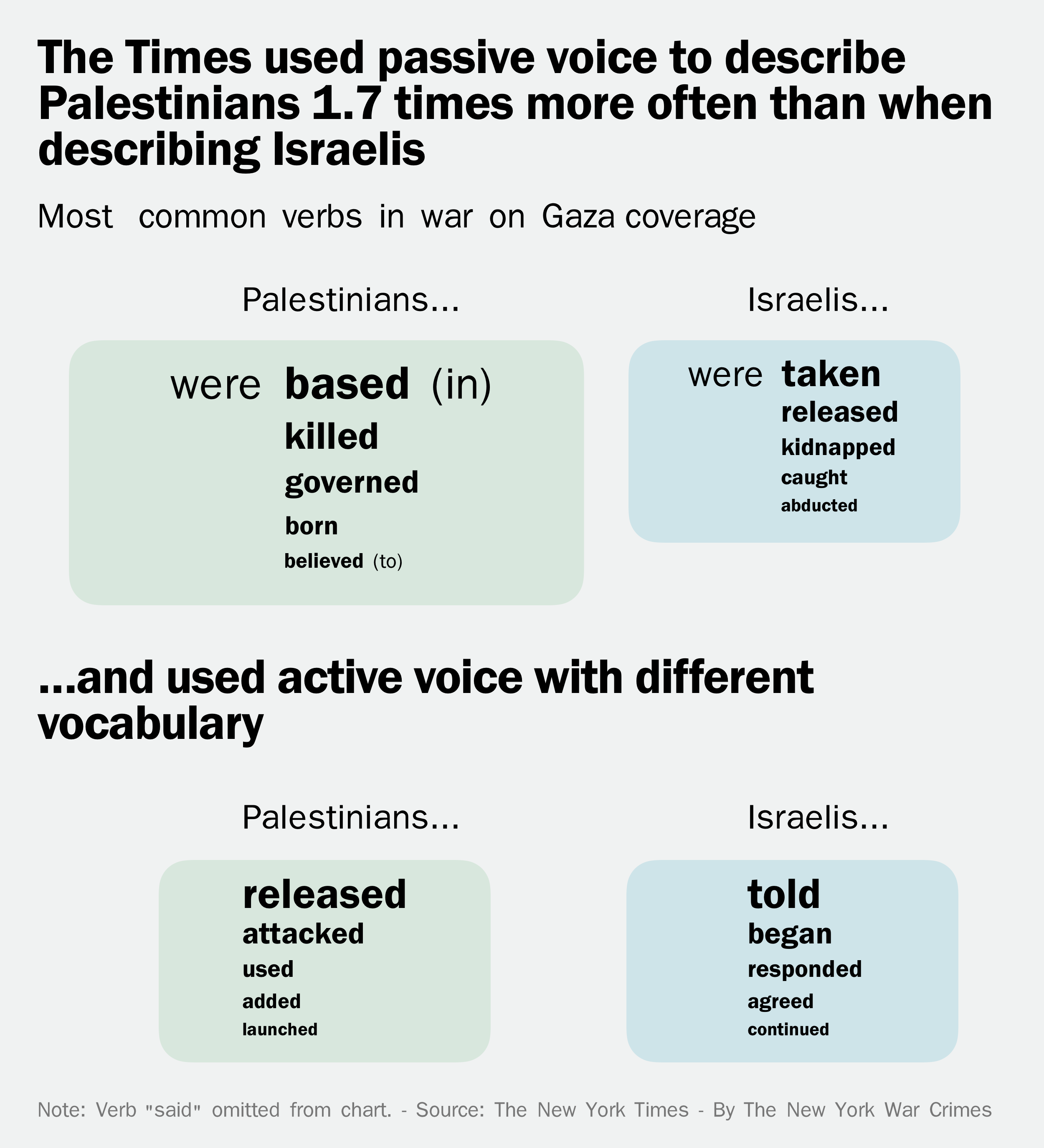Since October 7, The Times has published thousands of articles on Israel’s war on Gaza. To identify patterns within this coverage, a team of NYWC data engineers scraped information from the newspaper’s website and analyzed complex patterns of syntax and word associations. Our findings — which point to a profound disparity in The Times’ portrayal of Israelis and Palestinians — do not surprise us. This was not a frivolous computational exercise enacted for the purpose of exposing trends that we know all too well, but an effort to develop a resource that journalists, researchers and the public can use to understand these disparities quantitatively.
Explore the charts to learn more about this analysis. Our methodology, data, and fact-checking process can be seen here.
We learned that since October 7, The Times reported on antisemitism five times more often than Islamophobia, despite the increased violence faced by Arabs and Muslims, including the shooting of three Palestinian students in Vermont and the stabbing of a six-year-old Palestinian boy in Chicago.

We analyzed The Times’ use of sources in its reporting on Palestine and found a great disparity in who they relied on for their stories. The newspaper quoted Israeli and American sources, we estimated, more than three times as often as Palestinian ones. This trend is much starker when examining only quotations from officials. Israeli and American officials’ quotes outnumber Palestinians nine to one. It seems the best way to get the Times to ask you about what’s happening in Gaza is to be an American or Israeli official.

Overall, the newspaper focuses more on Israel than it does Palestine. Our analysis showed that even as the death count in Gaza rapidly moved into the tens of thousands, Israel and Israelis received, and still receive, far more mentions than Palestine, Hamas or Gaza.

We also found that the newspaper used the passive voice to describe Palestinians 1.7 times more than it did to describe Israelis. “Killed” was one of the most commonly used passive verbs with Palestinians — such as “Palestinians were killed” — indicating a tendency to obscure Israel as the agent of Palestinian deaths. Just as striking is the disparity in active verbs. Unsurprisingly for a newspaper, the most common active verb used for both groups was “said,” and so was not included in the chart. When controlling for that, the most common active verbs used with Israel largely related to discourse — “told,” “responded” and “agreed” were all in the top five. While for Palestinians, they tended to describe violence — “released,” “attack,” and “launch.”



